|
|
|
|
|
Intel Pentium D 920 and 955 Extreme Edition |
|
Join the community - in the OCAU Forums!
|
Benchmarking Results
BENCHMARKING RESULTS
Our benchmarks show that the Pentium D 920 “Presler” is performing by an average of around 5% better than the Pentium D 820 based “Smithfield”. It goes without saying that such a small difference is only detectable in benchmarks, but not actually noticeable for the user.
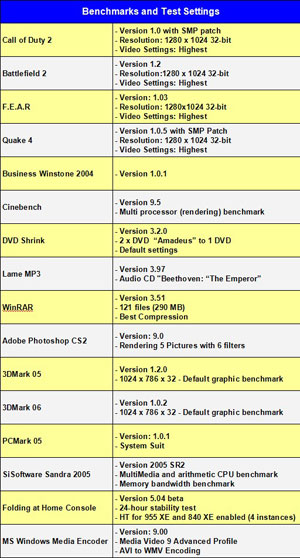
The 920 and the 820 run both at 2800 MHz and their system bus at identical 800 MHz. Performance differences between them are therefore solely the result of the doubled L2 cache and other changes that came along with the move to 65nm technology. Our results also show that the larger L2 cache is not always providing better application performance – in some cases the impact is zero. The 955 XE is performing far better than the 840 XE. In some games, such as Battlefield 2 and Quake 4, the 955 XE has a lead of more than 15%. This difference is not surprising: In addition to the doubled L2 cache and the finer production technology, the 955 XE is running 260 MHz “faster”, and the 1066 MHz system bus provides much better system bandwidth than with an 840 XE.
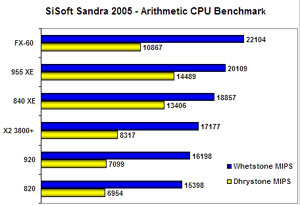 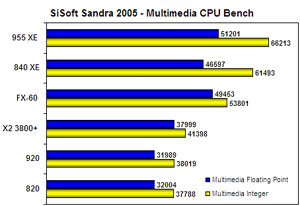
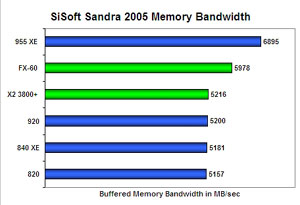 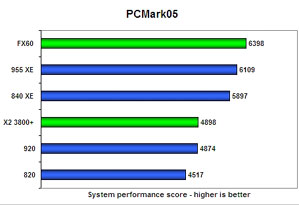
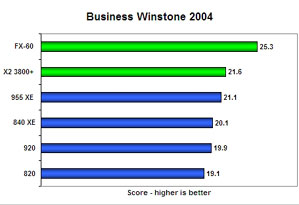 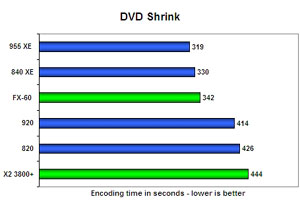
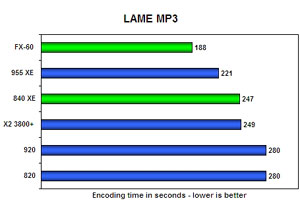 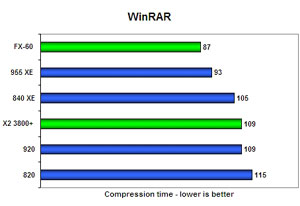
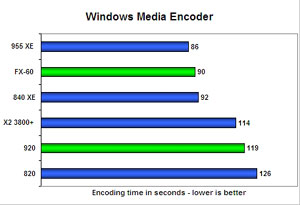 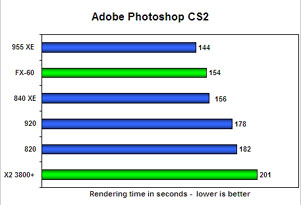
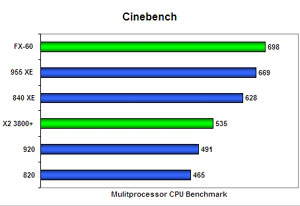 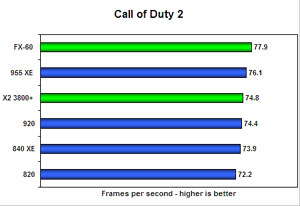
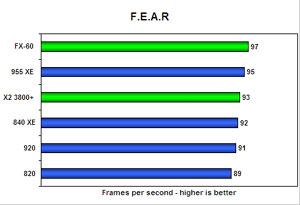 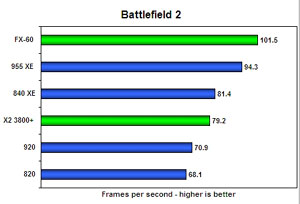
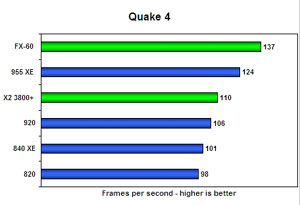 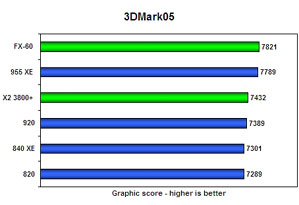
AMD's purpose in releasing the FX-60 shortly after Intel launched the 955 Extreme Edition was apparently to make sure that the dual core speed crown remains with AMD. And there is no doubt that AMD succeeded in this. In all our gaming benchmarks, and almost all application based benchmarks, the FX-60 is faster. The relative position however has changed: while the 840 XE could not beat the FX-57 in any benchmark, the 955 XE has moved much closer, and is actually faster in a few applications. The situation for the 920 looks a bit different: The X2 3800+ is faster in all our gaming benchmarks, but the difference to the new Pentium D has become rather small, much smaller than before between 3800+ and 820. The biggest difference we found was around 10% in battlefield. In “Call of Duty 2” and “F.E.A.R” the difference with a resolution of 1280x1024 and high quality video settings was almost zero. Running games at lower resolutions would show for CPU-bound games a wider gap between an X2 and a “Presler” system, but we do not think that anybody is playing the contemporary 3D games we were running at below a resolution of 1024x768. The situation in productivity benchmarks looks like a tie with as slight advantage for the 3800+: It performed better in Cinebench, LAME MP3, and Business Winstone. The 920 did better in “DVD Shrink” and in Photoshop CS2. In the remaining 3 benchmarks both processors are performing more or less identical. All in all: The 3800+ remains faster in gaming, albeit with a reduced lead, otherwise it’s a close call between these 2 processors.
|
|
Advertisement:
All original content copyright James Rolfe.
All rights reserved. No reproduction allowed without written permission.
Interested in advertising on OCAU? Contact us for info.
|

|


